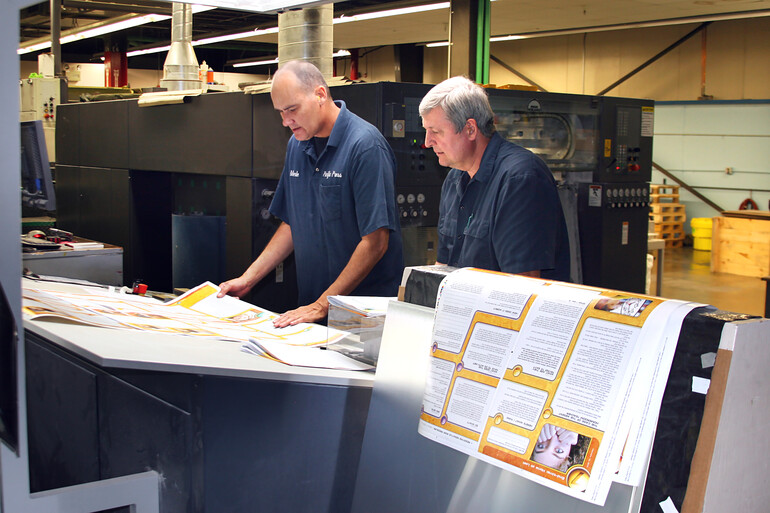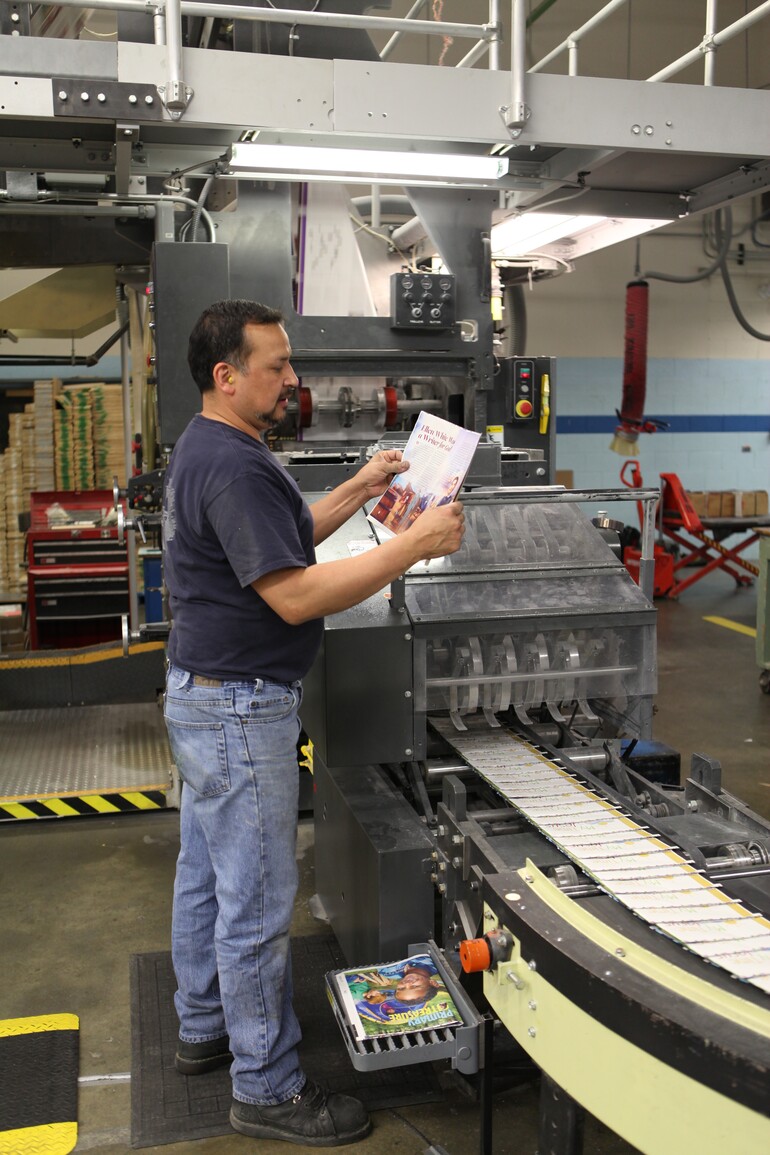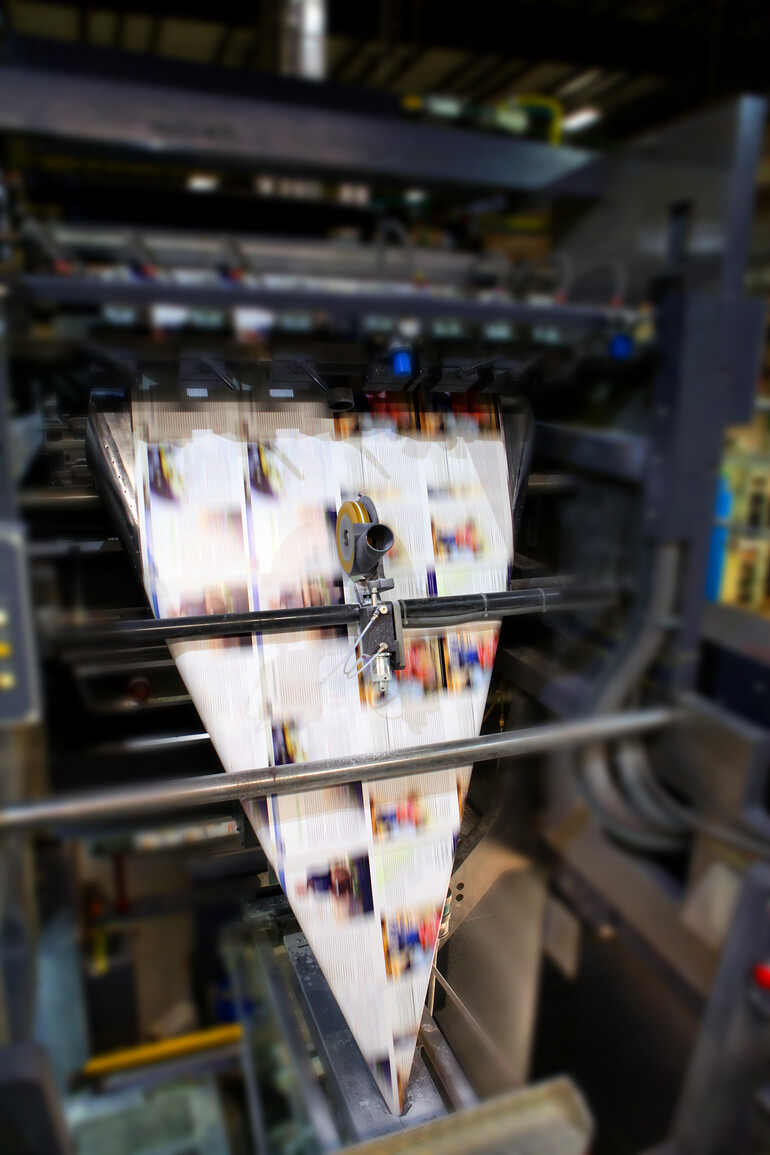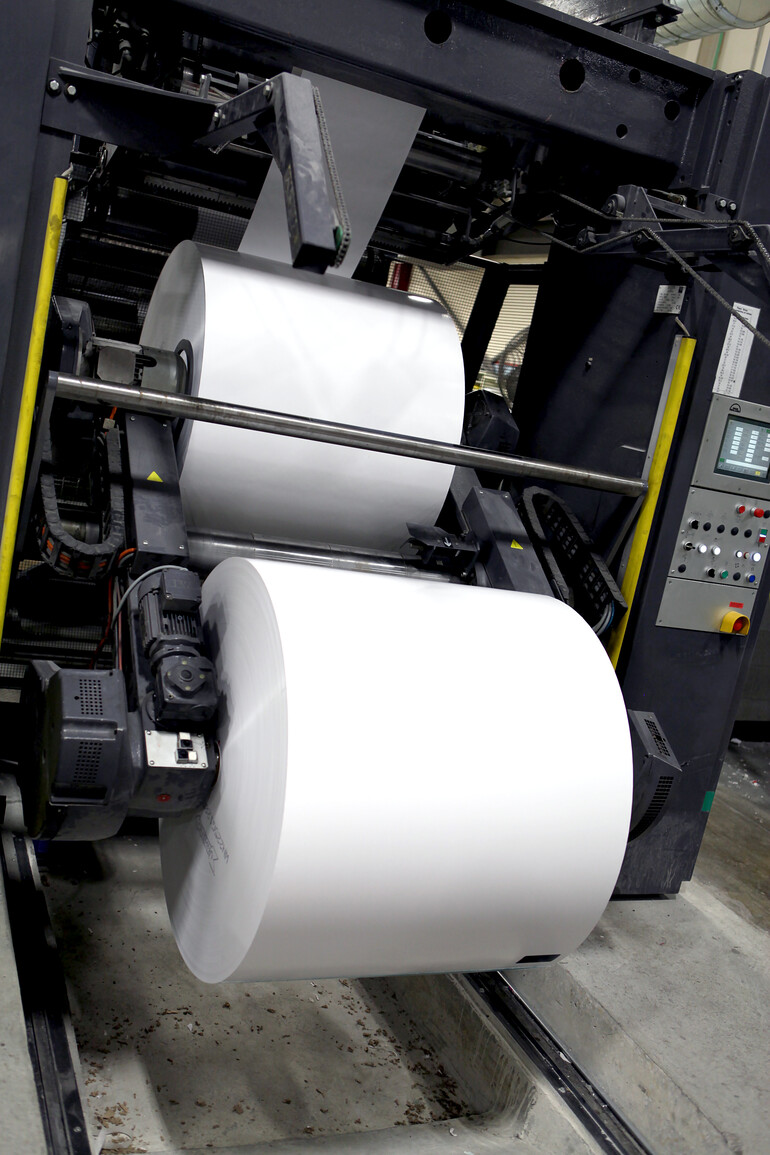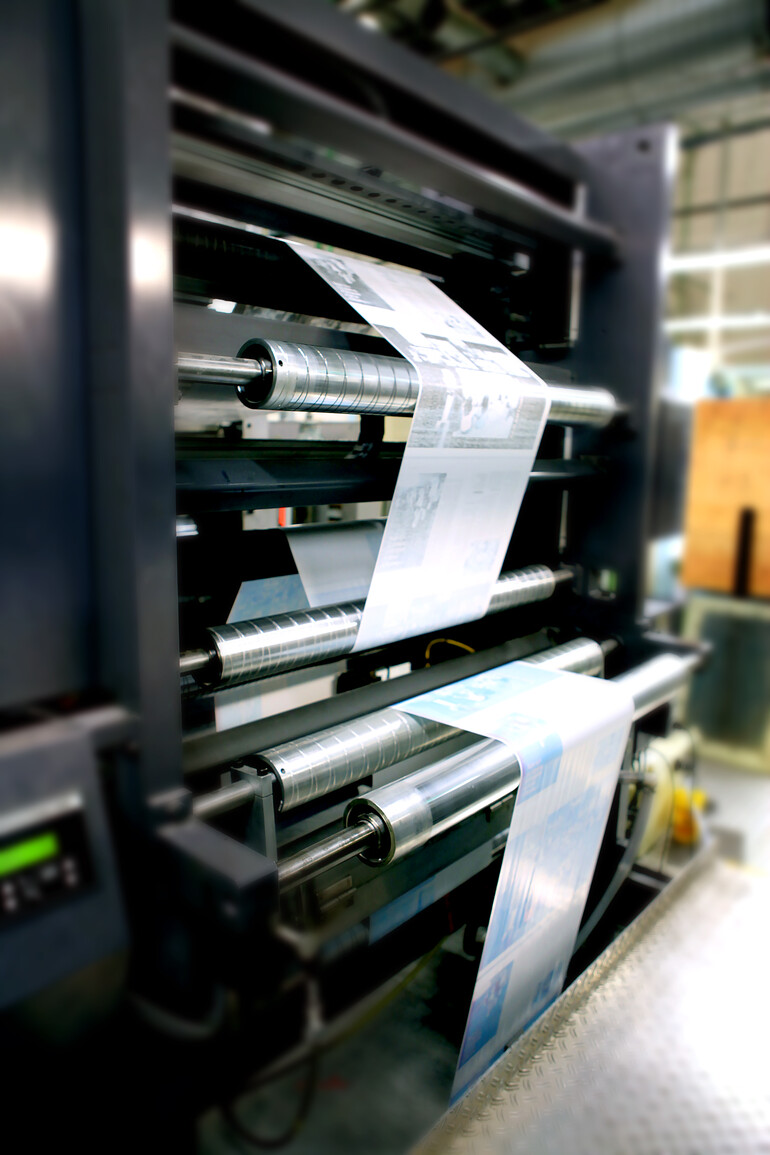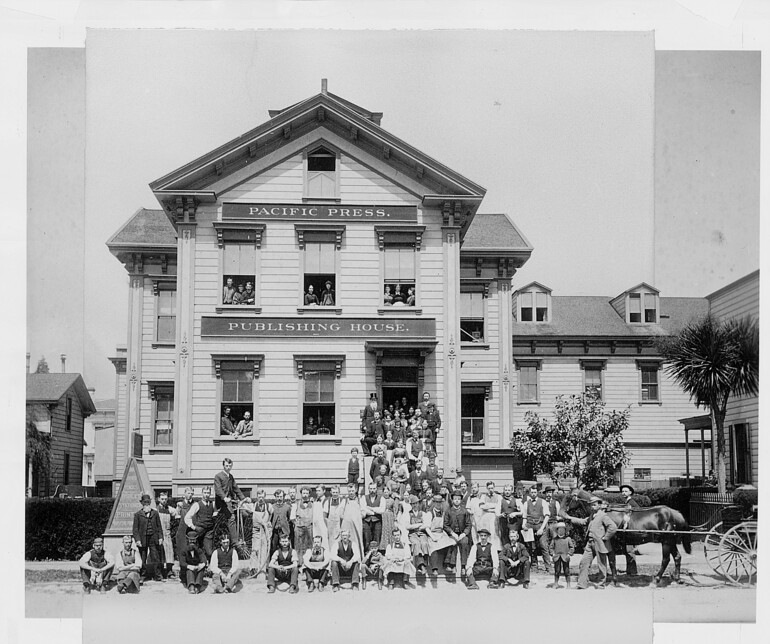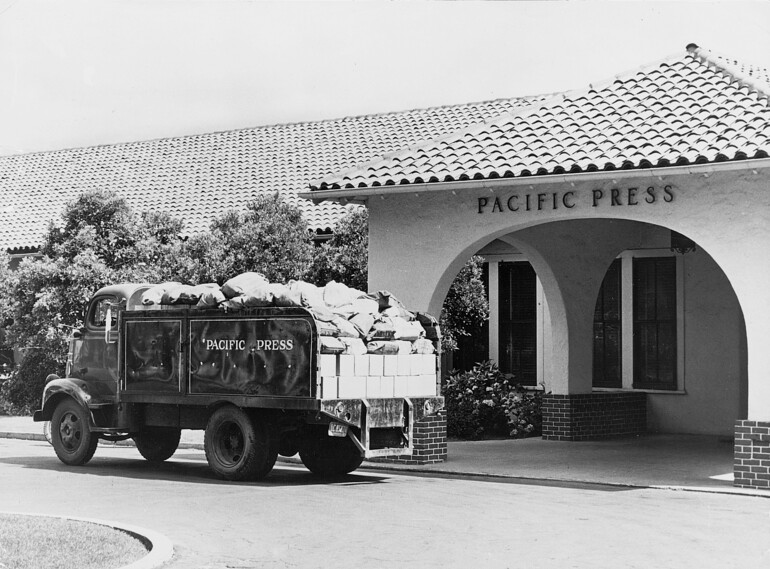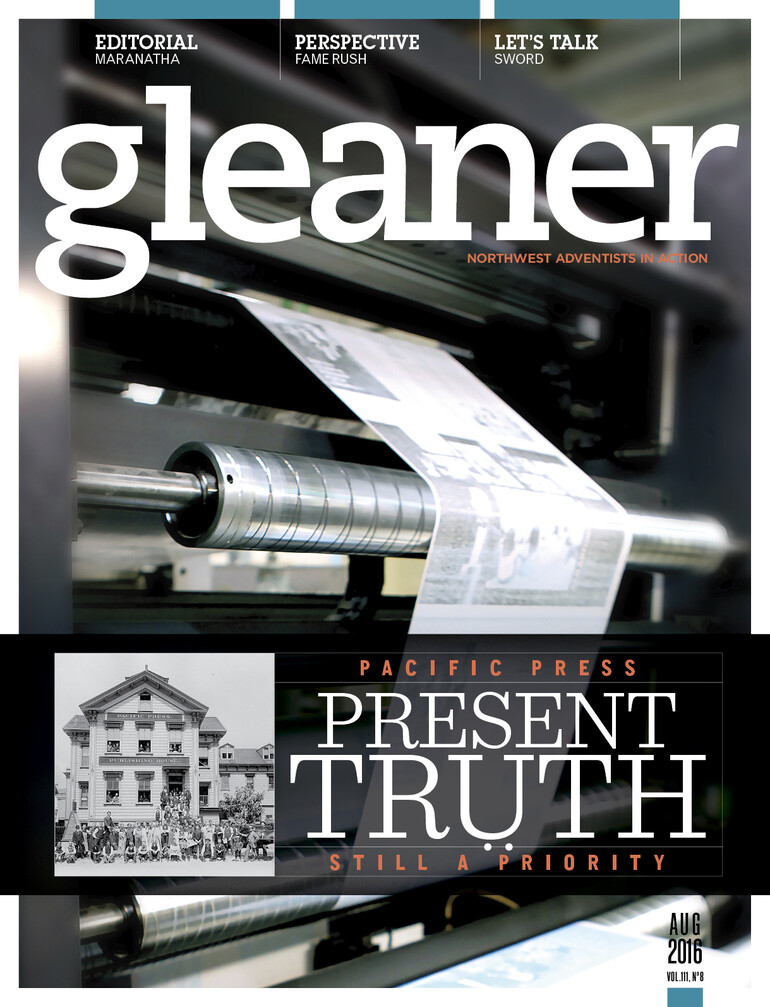Small Beginnings
In the summer of 1849, a near-penniless man laid down the scythe he’d been using to mow the farmers’ fields, picked up a pen and began to write. His name was James White, and his wife, Ellen, told him he needed to publish a little paper. “Let it be small at first,” she said, “and it will be a success from the first.” While the fields around him may have been ready to harvest, God had a different harvest in mind for James.
Soon he had written the first issue of The Present Truth. After walking 8 miles to the printer, he carried a thousand copies back home in a carpetbag. He and Ellen placed the papers on the floor in front of them and called a small group of believers to join them in prayer. Together they knelt down and, with humble hearts and many tears, pled for the Lord to bless the message they were about to send out. And so began the publishing ministry of what would one day become the Seventh-day Adventist Church.
Twenty-five years later and more than 2,000 miles away, James White started another magazine, Signs of the Times, in his home in Oakland, California. Faced with prohibitive rail charges and endless delays in sending print material from Battle Creek, Michigan, to the believers on the West Coast, James established the Pacific Press Publishing Association. In 1904, it relocated to Mountain View, California, where it remained for 80 years, before the high cost of living in what had become the Silicon Valley forced a move to its current location in Nampa, Idaho, on December 7, 1984.
Transitions
While the challenges of increased shipping charges and rising cost of living could have been predicted, who could possibly have imagined the changes that would occur in the publishing industry when, in 2007, Amazon released its first Kindle? In the months that followed, scores of publishing houses went out of business, and many bookstores, including Borders, filed Chapter 11 bankruptcy. Predictions that every household in the country would soon own multiple e-readers sent publishers scrambling to include e-books in their lineup.
Both Review and Herald and Pacific Press felt the effects of the changing trends in reader preferences. But, within the church, publishing is first and foremost a ministry. It has always been about finding the most effective way to spread the message.
While our pioneers traveled by horse and carriage to share their message with scattered groups of believers, they understood how limited was their reach. Under God’s guidance, the publishing work took those same messages, captured them in print and sent them around the world.
As a result, millions have been won to Christ through the years. Now, 170 years later, new ways of sharing the gospel are being added to the standard printed page.
More than 1,500 e-books are available at Adventist-ebooks.com. And while reader response has been favorable, it’s interesting to note that sales of digital books have not significantly affected sales of print books. In spite of projections showing that digital publishing would take over printing, the publishing industry is now tracking a decline in the sale of e-books.
Experts in the publishing industry report that having both print and digital options increases overall sales. While e-books remain a popular way to read stories, most people prefer a paper book when they intend to study a topic carefully. Most books published by Pacific Press are designed for study.
Further Transitions
Another unexpected transition came about in June 2014, with the biggest reorganization in Adventist publishing’s 153-year history taking place when the constituency meetings of both Review and Herald and Pacific Press voted in favor of restructuring. As a result, Review and Herald closed operations at its 80-acre facility in Hagerstown, Maryland, over a period of several months and now continues its ministry at the General Conference headquarters in Silver Spring, Maryland, with a different focus. It publishes the Sabbath School quarterlies for every age group, the magazines Adventist Review and Adventist World, and all new books prepared by the E.G. White Estate and other departments at the General Conference.
But publishing houses are more than paper and printing presses. At the heart of any ministry are the people who have worked together for decades and have become like family.
This has been perhaps the most difficult aspect of the transition. Several who worked at Review and Herald took early retirement, others found work in the area, and a total of 26 employees moved to join the Pacific Press team in Nampa, Idaho. They fill positions within every department, and the skills they have brought with them are invaluable. The number of employees at Pacific Press has risen from 120 before the transition to a total current work force of 177, including student and temporary workers.
As the publisher for the North American Division, and with an increased workload, Pacific Press has invested in newer, more efficient equipment to meet the demand. A Man Roland Rotoman printing press was purchased and shipped in nine truckloads from Arizona. With its running speed of 50,000 pages per hour and the addition of extra shifts, production is flowing smoothly and printing deadlines are being met.
Trending
Regarding reading trends within the Adventist Church in North America, it’s been noted that there is a renewed demand for sharing literature. Whether it is books, magazines, booklets or tracts, members are anxious to have appropriate literature to share with others. Each sharing piece invites interested readers to learn more through ministries like the Discover Bible School, the Hope Channel and bibleinfo.com.
This year the North Pacific Union, the General Conference and Pacific Press have partnered to develop a pilot program called Project 28. It is designed to encourage literature outreach in the local church. The first book in this program, Live to 101, has already placed more than a quarter of a million books in communities around North America.
In its new role as the North American Division publishing house, Pacific Press is excited for the opportunity to work in partnership with the division departments and ministries helping to ensure that not only are needed resources developed, but that the training to use these resources will be part of an ongoing program. The children’s ministries department, for example, is now involved in planning content for Our Little Friend, Primary Treasure and Guide magazines, and these magazines have now become part of the NAD children’s ministries program rather than just an ancillary product.
Vision for Tomorrow
And what does the future of publishing hold? Within the industry, the growth of the e-book phenomenon has slowed down for many of the major houses and typically accounts for 20 to 25 percent of their revenues. How this will shift and change in the future is anyone’s guess. Pacific Press president Dale Galusha states, “Pacific Press remains committed to its mission of effectively uplifting Jesus through communicating biblical teachings, health principles and family values through both the printed and electronic page.”
Fun Facts About Pacific Press
- Ships more than 5,250,000 pounds of mail a year — largest bulk mailer in Idaho
- Uses more than 8,000,000 pounds of paper in the web press and more than 4,100,000 sheets of paper in the sheet-fed press annually
- At capacity, printed pages can cover a football field every six-and-a-half minutes
- Prints more than 2 million pages per hour
- Publishes about 60 new books each year
- More than 2,000 trucks deliver or pick up product each year
Milestones in North American Publishing
1849 — The Present Truth printed
1850 — The Adventist Review first published
1855 — James and Ellen White move to Battle Creek, Michigan, where the Review and Herald flourishes
1874 — The first issue of Signs of the Times published in Oakland, California
1901 — Edson White establishes the Southern Publishing Association in Nashville, Tennessee
1902 — Review and Herald moves from Battle Creek to Takoma Park, Maryland
1904 — Pacific Press moves to Mountain View, California
1980 — Southern Publishing and Review and Herald merge
1983 — Review and Herald moves to Hagerstown, Maryland
1984 — Pacific Press moves to Nampa, Idaho
2014 — Restructuring results in the Review and Herald moving to the General Conference and Pacific Press becoming the North American Division publishing house








